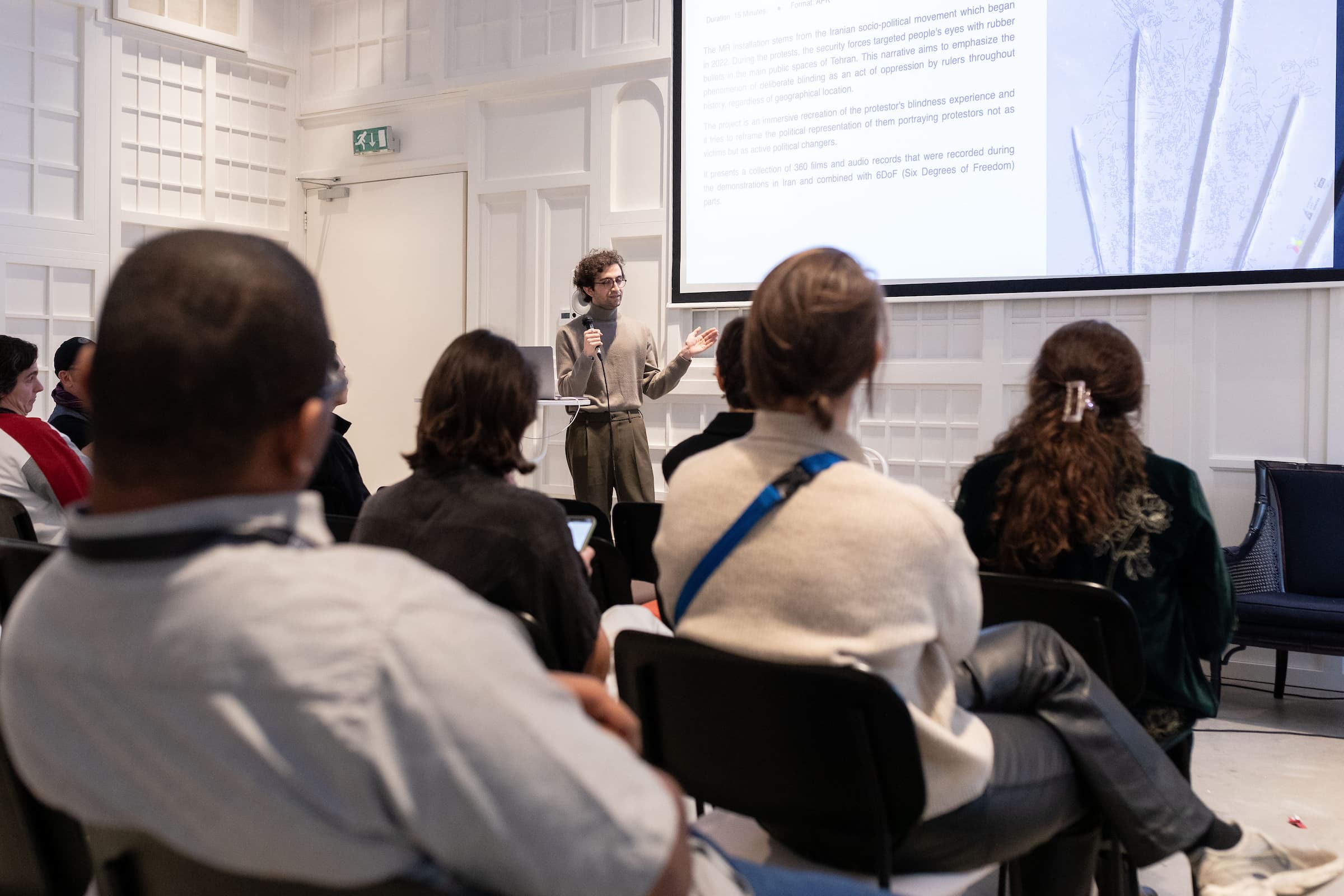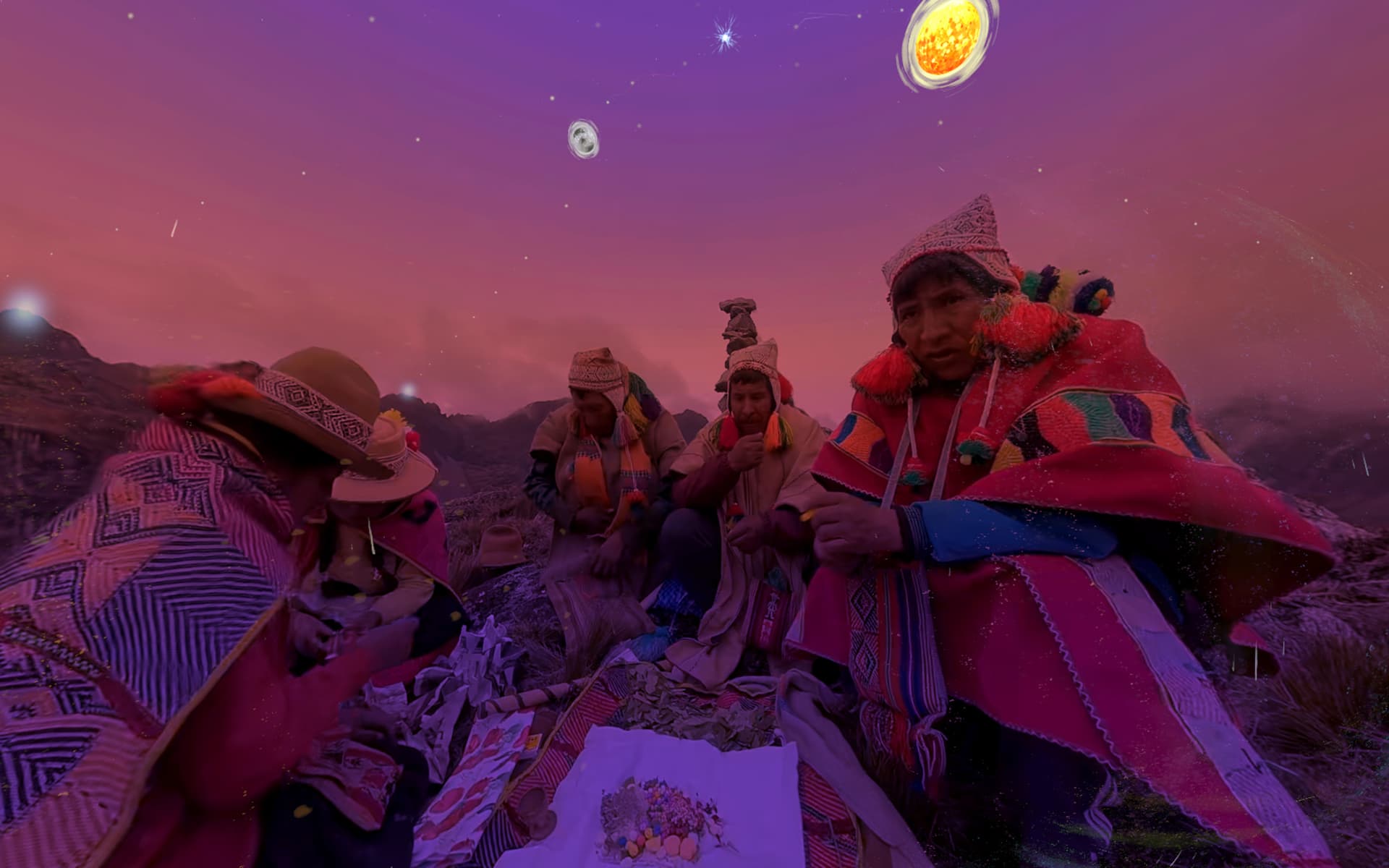
Bits of Awe: how 'awe' in immersive art can change us
Can immersive art evoke experiences of 'awe'? And could the experience of awe induce personal or even societal transformation? Those questions are the focus of a current research by Jaz Hee-jeong Choi. In collaboration with IDFA DocLab, Amsterdam University of Applied Sciences, and various interdisciplinary partners across Europe, the study explores how awe in immersive art can lead to something larger-than-life—and in some cases, even more-than-human.
Throughout history, 'awe' has captivated human minds as evidenced in art, mythologies, culture, and religious rituals. Awe and related concepts such as the sublime and wonder have been explored in various fields from humanities to sciences. More recently, there has been a growing interest in the transformative effect of awe experiences on the human body and mind. For example, in Awe: The New Science of Everyday Wonder and How It Can Transform Your Life by Dacher Keltner, professor of psychology at the University of California, Berkeley, argues that awe-inspiring art happens "when we violate expectations, when things are out of place or turned upside down (...) The power of awe is that it motivates us to see beyond our own desires. It quiets the voice of the self.”
But what hasn’t been researched much before is the role of awe in immersive art – more specifically, how awe experiences go beyond embodiment and multisensory interaction of immersive media. “Recent psychological research on awe begs the question about how experiencing awe might evoke broader collective change,” researcher Jaz Hee-jeong Choi explains. “After times of pandemic lockdowns and isolation, climate anxiety, depression, and everything else happening in the world, people are looking for new ways of living; living and changing together. Awe can provide novel pathways to imagine and co-create different futures. All of this comes together in our pilot project Awe in Immersive Art for Societal Transformation.”
Awe in life and art – and how that changes us
Choi first presented the project at the IDFA DocLab R&D Summit 2024. The presentation was followed by two R&D sessions with artists discussing the meaning of awe in their creative practice. In addition, visitors of the DocLab Exhibition were asked to share their awe-inspiring experiences with works at the exhibition. The entries became part of an evolving archive of awe experiences, helping our understanding about how we experience awe in life and art, and how that changes us. You can still anonymously contribute to the research via this online form, or explore all gathered Bits of Awe so far here.

'From the Artists - Awe in Immersive Art' R&D session (IDFA DocLab R&D Summit 2024)
More-than-human worlds
“For me personally, Anagram’s work in [the DocLab Playroom] The Body Amorphous was one of the most awe-inspiring projects at IDFA DocLab 2024,” illustrates Choi. “There wasn’t particularly advanced digital technology involved, so perhaps it contrasts with the conventional definition of immersive art today. But was it immersive? Yes, absolutely. It also challenges our fixation on technologies and opens new questions about how we can better cohabit our more-than-human worlds with other-than-humans ranging from algorithms to microbes. This is something Drinking Brecht: An Automated Laboratory Performance and Ancestral Secret VR touched upon at last year’s edition of DocLab.

'Ancestral Secret VR' by Francisca Silva & Maria Jose Diaz (IDFA DocLab 2024)
New grounds
The consortium members of the Awe in Immersive Art for Societal Transformation project are working together to form new grounds for transdisciplinary creative practice, research, and collaboration. The consortium brings together experts in art, design, new media, psychology, and cultural mediation from University of Oxford (UK), Aalto University (Finland), Leiden University (Netherlands), RMIT (Australia/Spain), Dutch National Opera & Ballet, Opera Forward Festival (Netherlands), ZEMOS98 (Spain), as well as Amsterdam University of Applied Sciences and IDFA Doclab. Later this year, they plan to share preliminary insights at the IDFA DocLab R&D Summit 2025.
Choi: ”Immersive media can enable diverse ways to experience and acknowledge other cultures, histories, contexts, and ways of storytelling. In this sense, awe in immersive art can evoke new ways of caring: understanding that there’s so much more, something so much bigger than what we can imagine, creating new ‘cracks’ to open up possibilities for different worldviews and with hope, imagine and realise possible futures, together.”